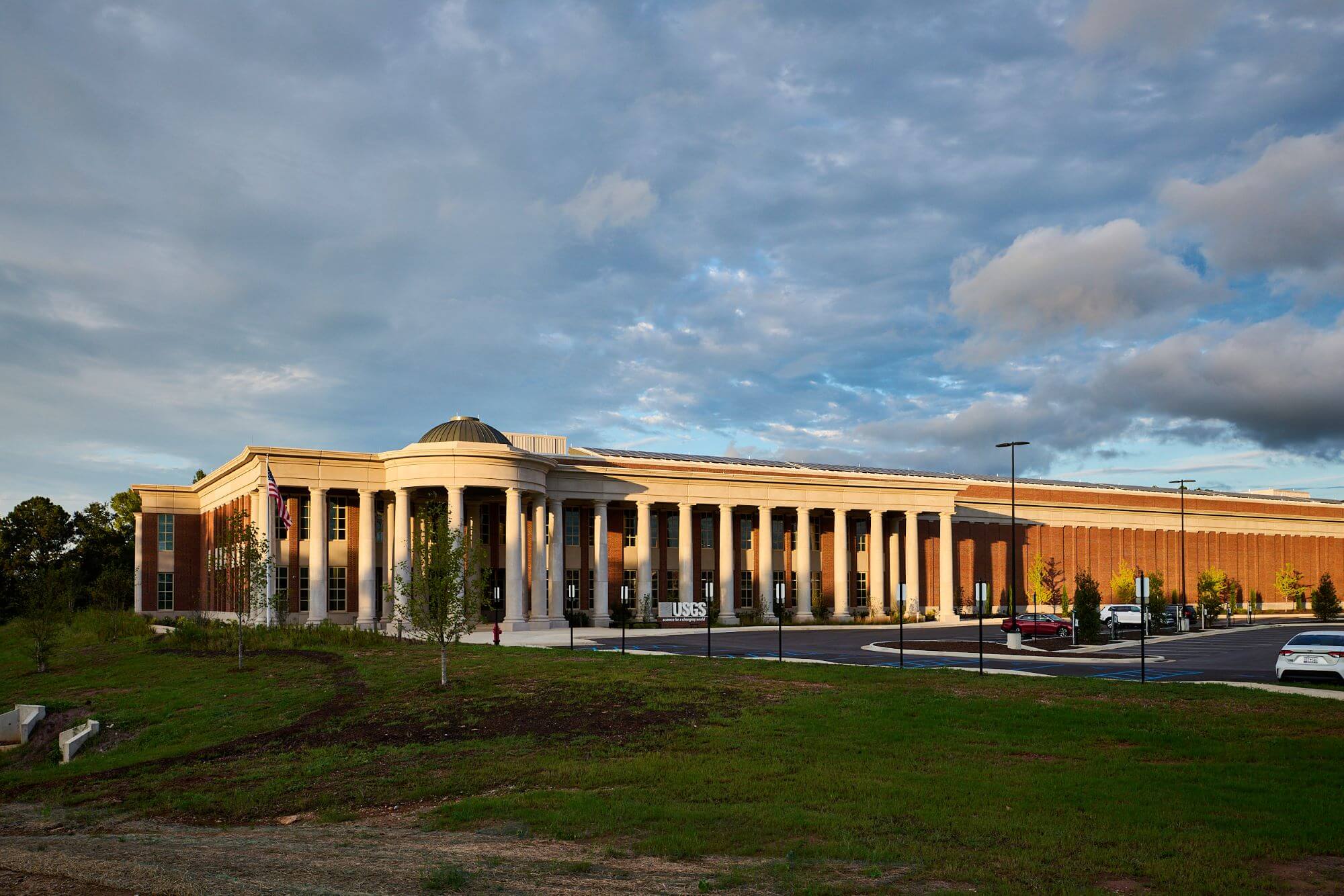A Testament to Design: The Balance of Utility and Elegance in the Hydrologic Instrumentation Facility
February 13, 2025
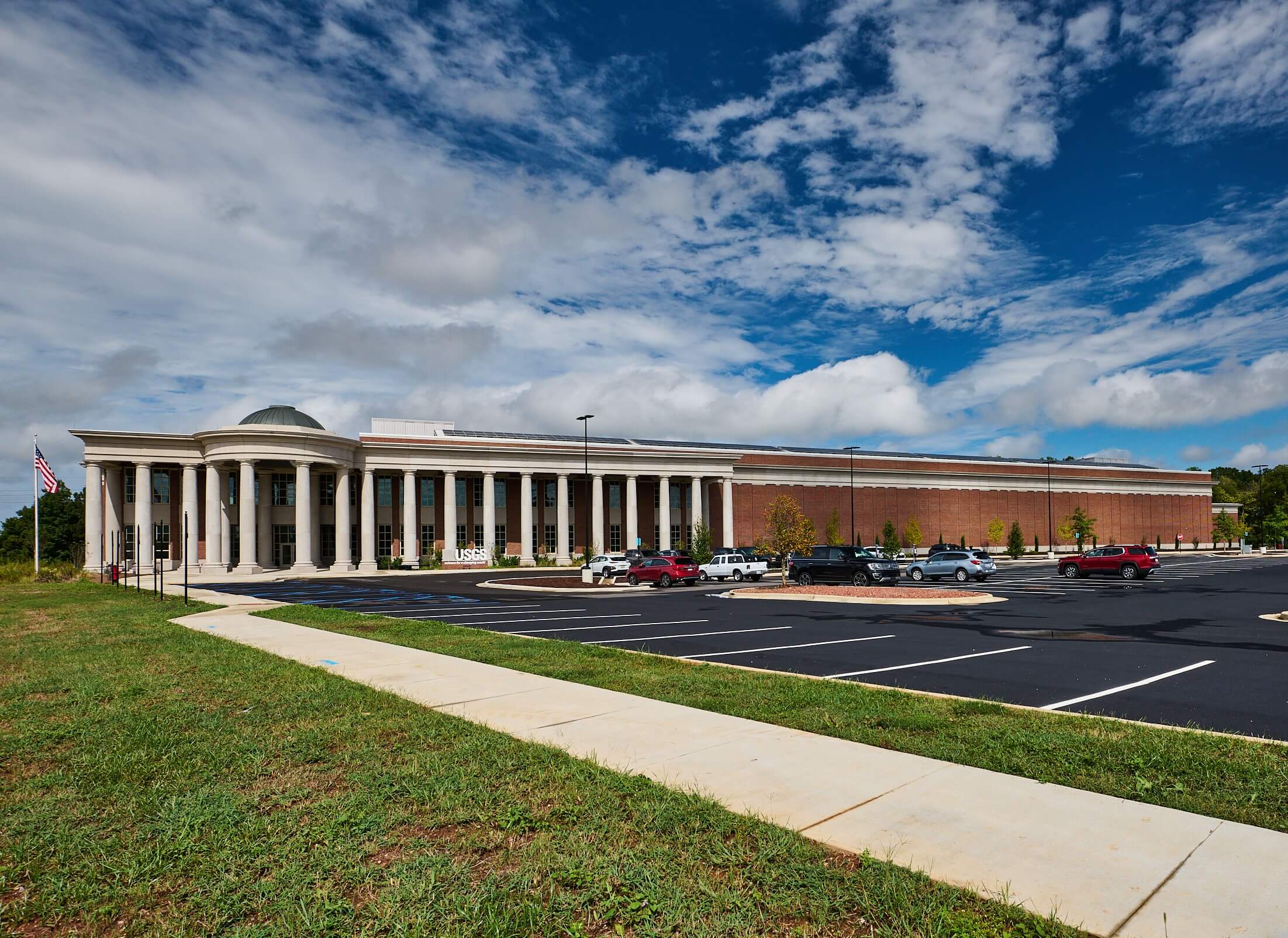
Building Architecture
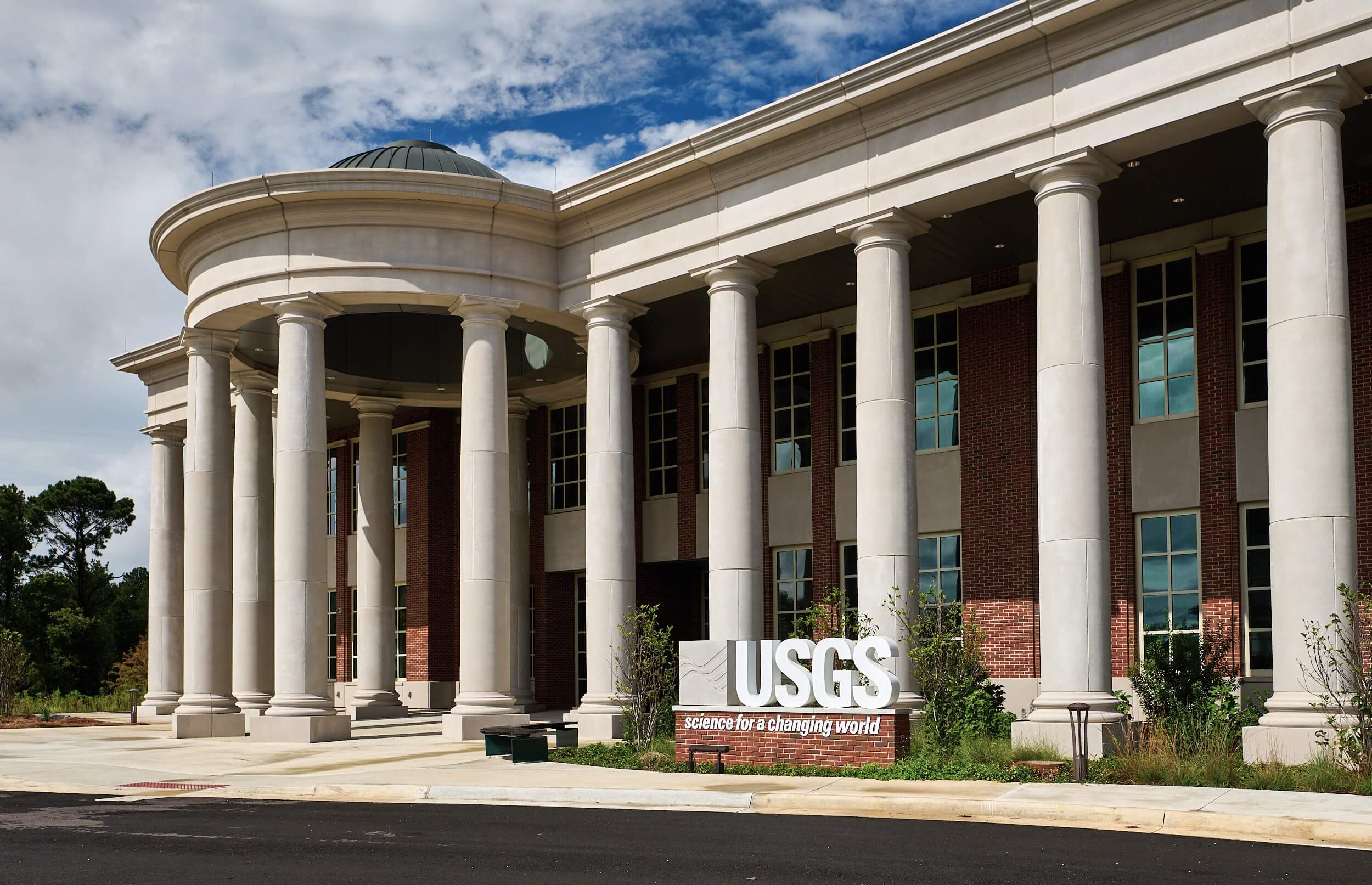
Located on the historic University of Alabama, Tuscaloosa campus, the HIF’s exterior complements nearby buildings. Stanley Consultants’ architects designed the modern laboratory facility to blend elements of downtown Chicago warehouse architecture with influences from the Marshall Field building. Red brick, cast stone cornices and precast concrete columns integrate the design into the campus' neoclassical aesthetic. This careful integration allows the HIF to harmonize with its surroundings while remaining a fully functional facility for modern scientific research.
Community Integration and Educational Synergy
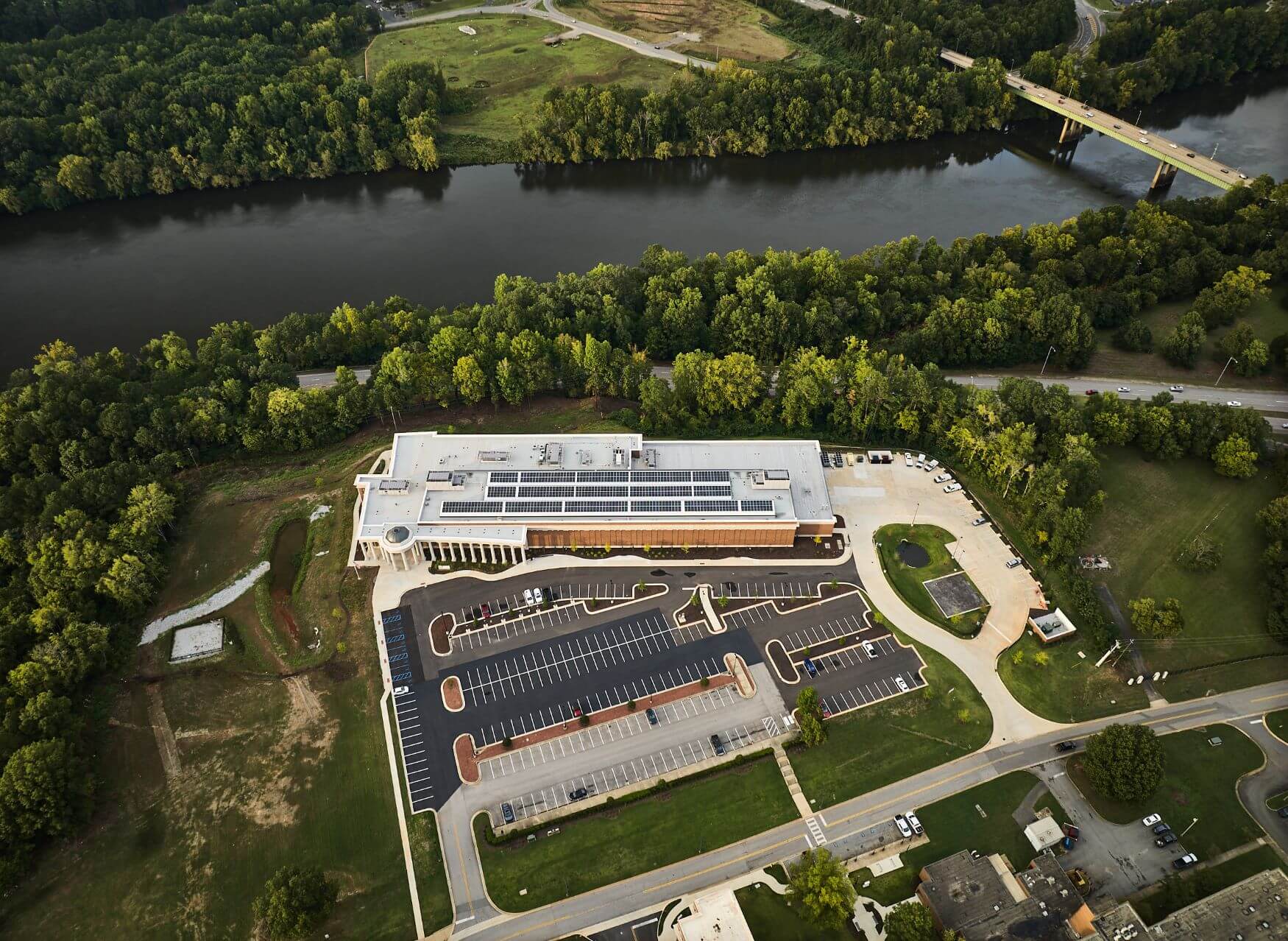
Situated within the university’s campus near the National Oceanic and Atmospheric Administration (NOAA) National Water Center, the HIF fosters collaboration between the United States Geological Survey (USGS), the University of Alabama and other research entities. For decades, USGS and NOAA have collaborated over long distances, but the HIF’s move put them in close proximity, opening opportunities for the USGS and UA to collaborate and bring students into that relationship. Students benefit from hands-on learning, bridging academia and real-world water science applications. The HIF encourages interdisciplinary collaboration across water science, technology and academia. This harmony between architecture, engineering and research leads to advances in hydrology, positioning the HIF as a key contributor to the future of water management.
A Modern Take on Tradition
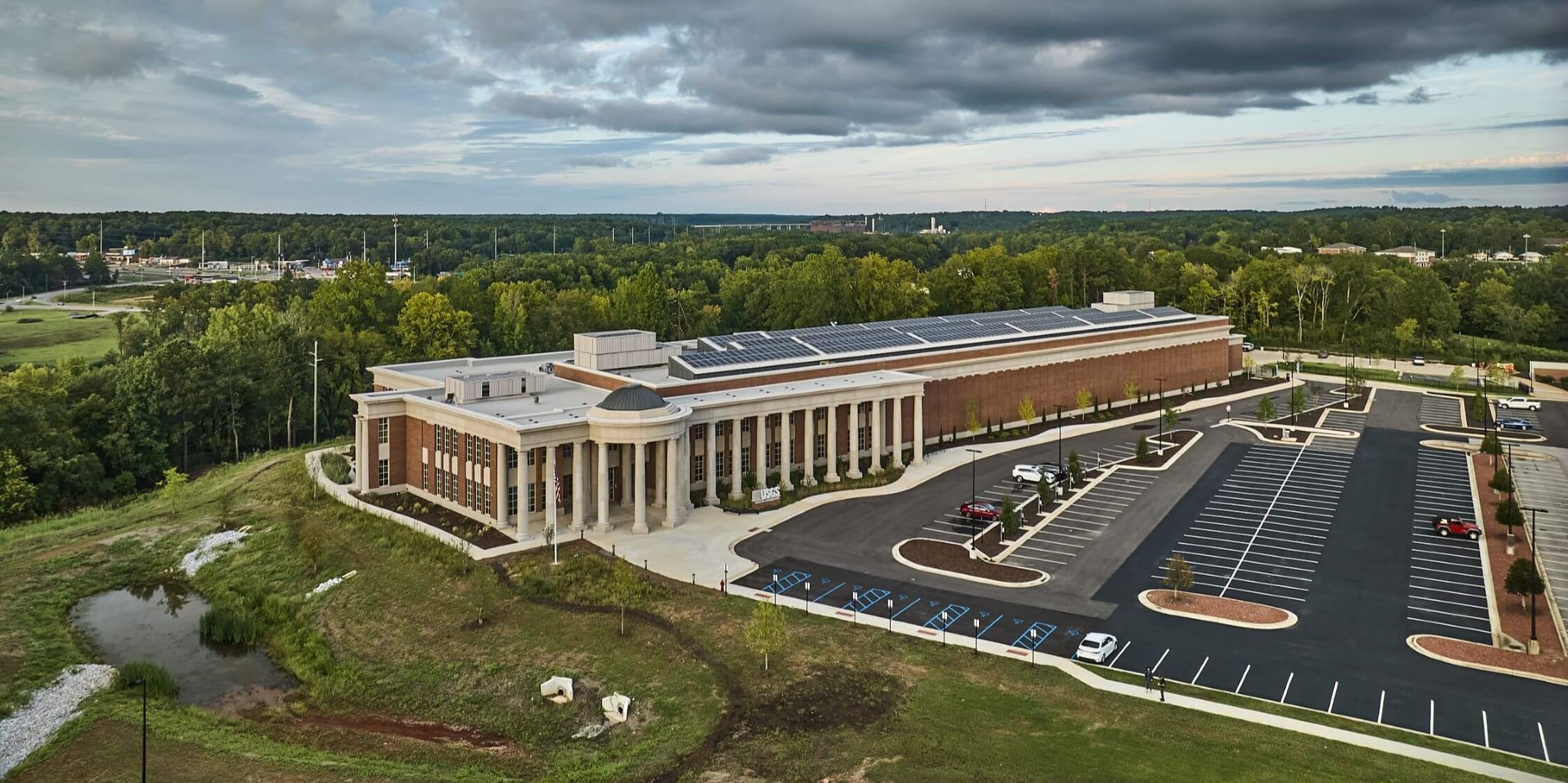
Main Entry and Lobby: Welcoming Innovation
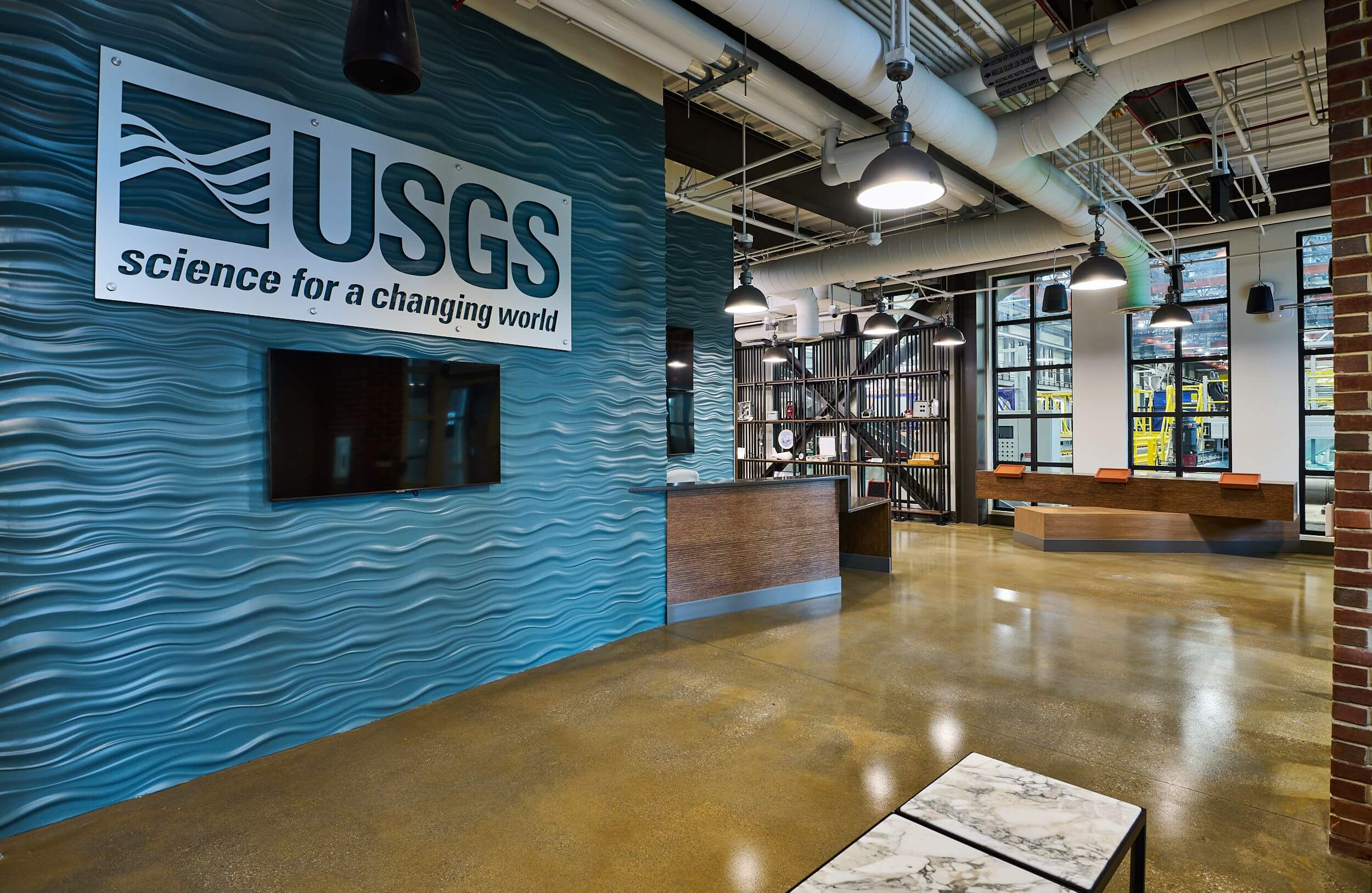
Visitors are greeted by a reception area featuring custom millwork, a quartz desk, a textured wave wall and digital displays showcasing the USGS updates and artwork. The space integrates functionality with a welcoming ambiance, setting the tone for the facility’s innovative spaces.
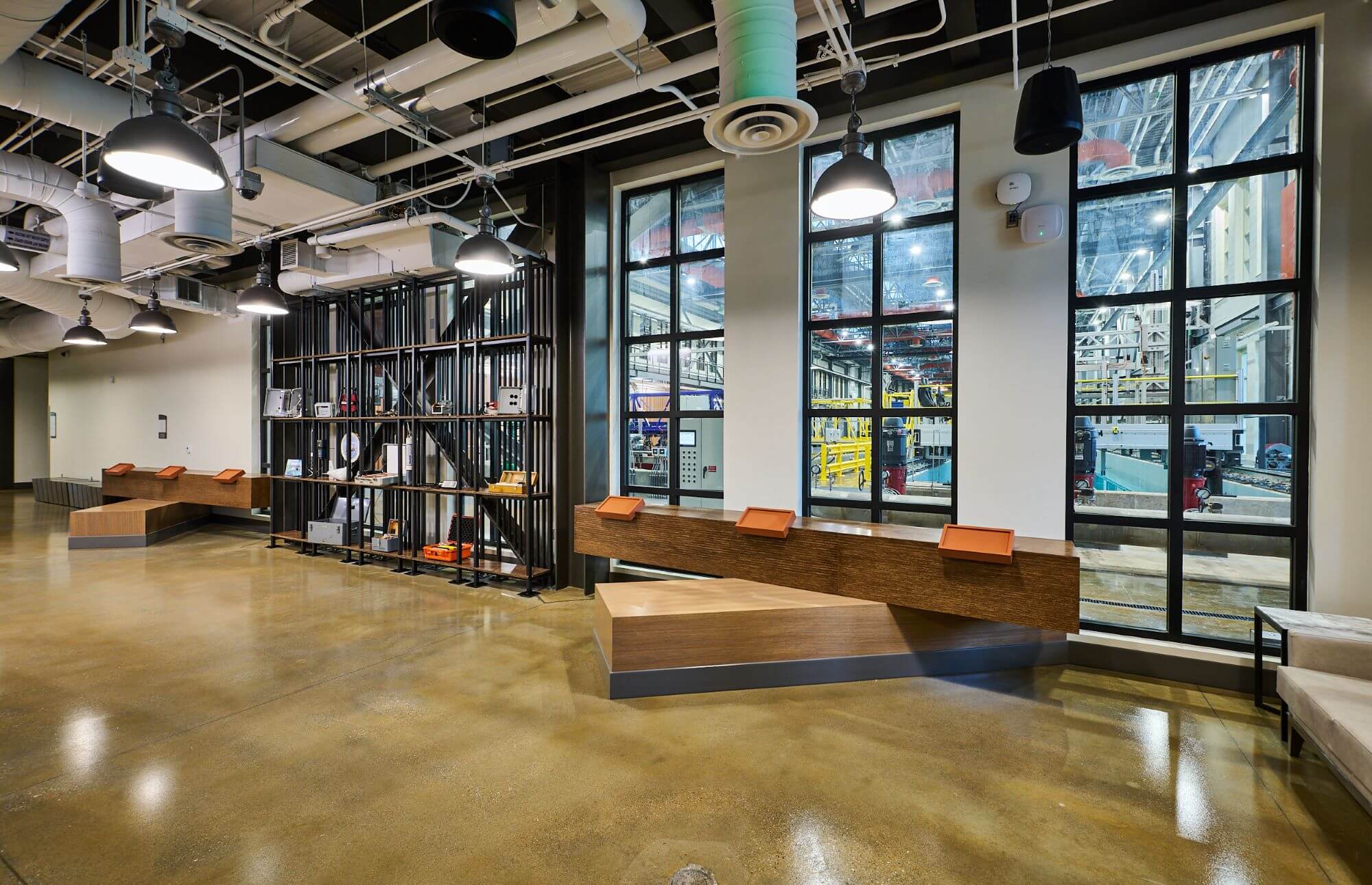
Hydraulics Laboratory: The Heart of Water Science
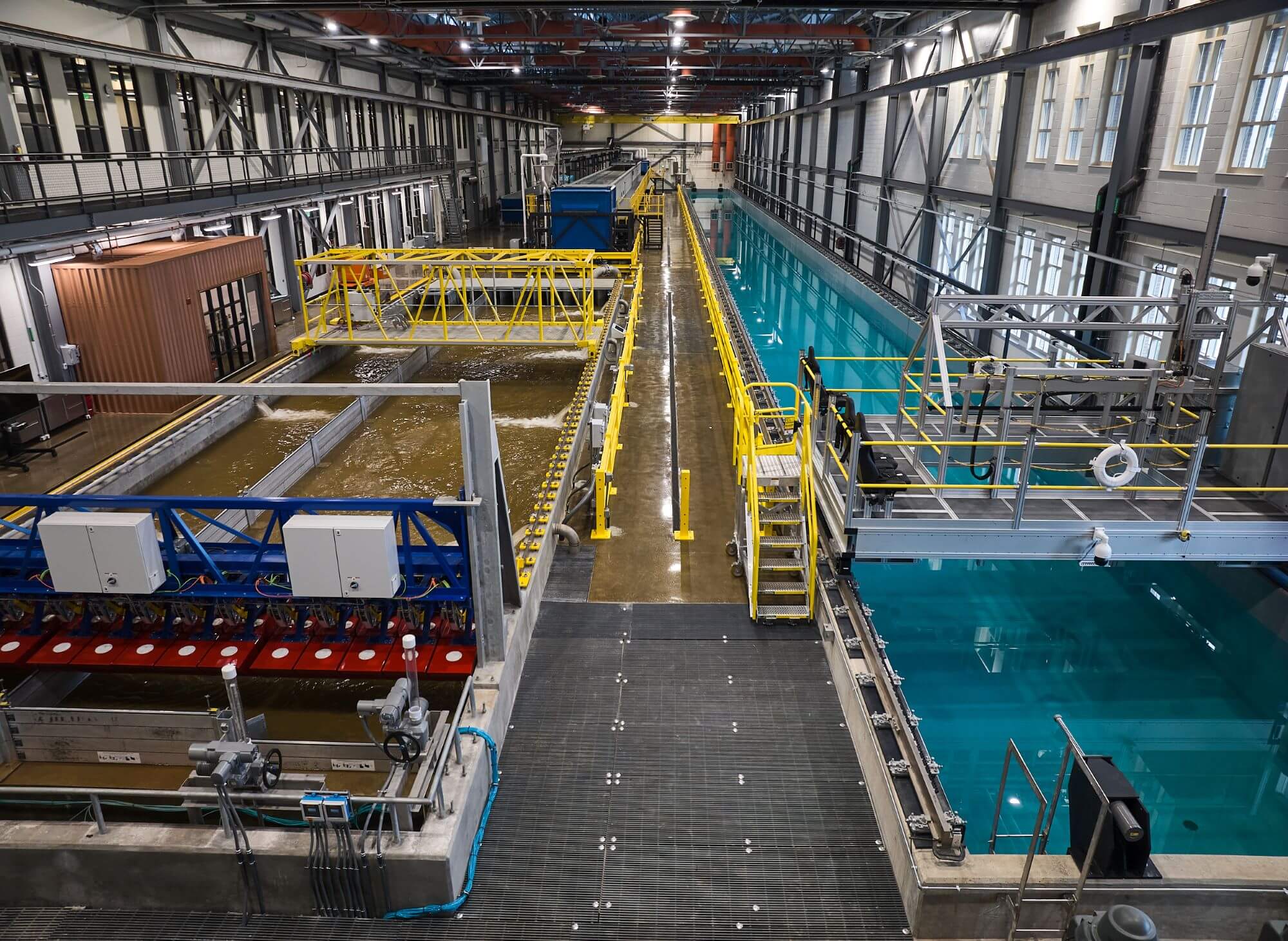
The core of the HIF is its hydraulics lab, a 32,000-square-foot facility with cutting-edge equipment such as a 350-feet-long tow tank, a 230-foot-long tilting flume, a test basin, a wind tunnel and Acoustic Doppler Current Profiler tank. A wave generator adds another dimension to this state-of-the-art facility. These features allow precise calibration and simulation of river and stream processes essential for advancing hydrologic science. Durability is supported by innovations like a marine coating system for test basins which protect against wear from water-based research.
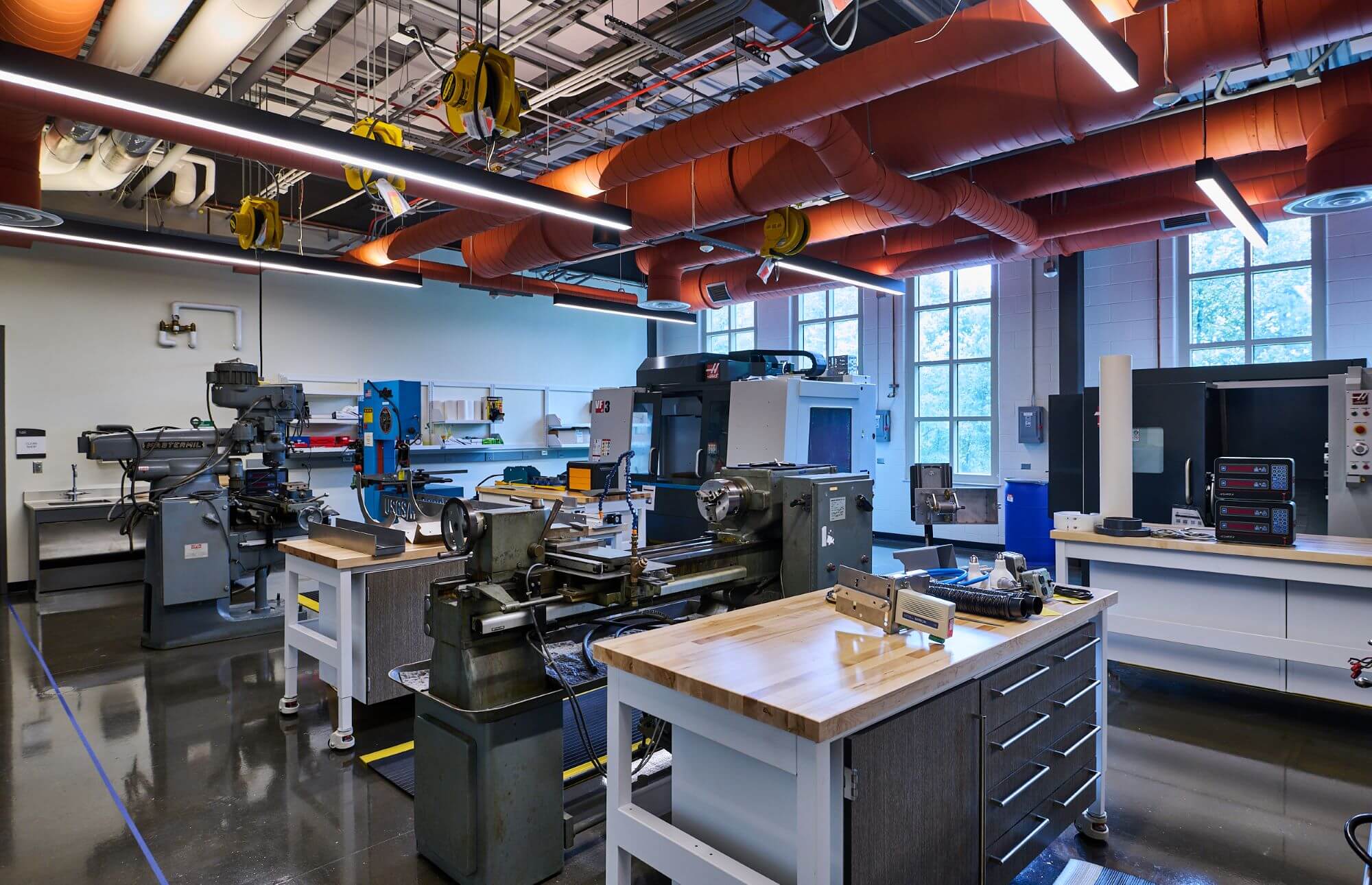
The HIF includes groundwater wells, field testing spaces and an environmental testing chamber capable of temperatures from -40°F to 160°F. It also features an innovation lab with 3D printers for polylactic acid, metal and resin prototyping. Dedicated areas for testing, repairing and developing hydrologic equipment are available, along with a paint booth, welding area and an 11,000-square-foot warehouse for materials storage. The environmental testing chamber promotes robust equipment performance by maintaining extreme temperatures.
Building Spaces and Flexibility
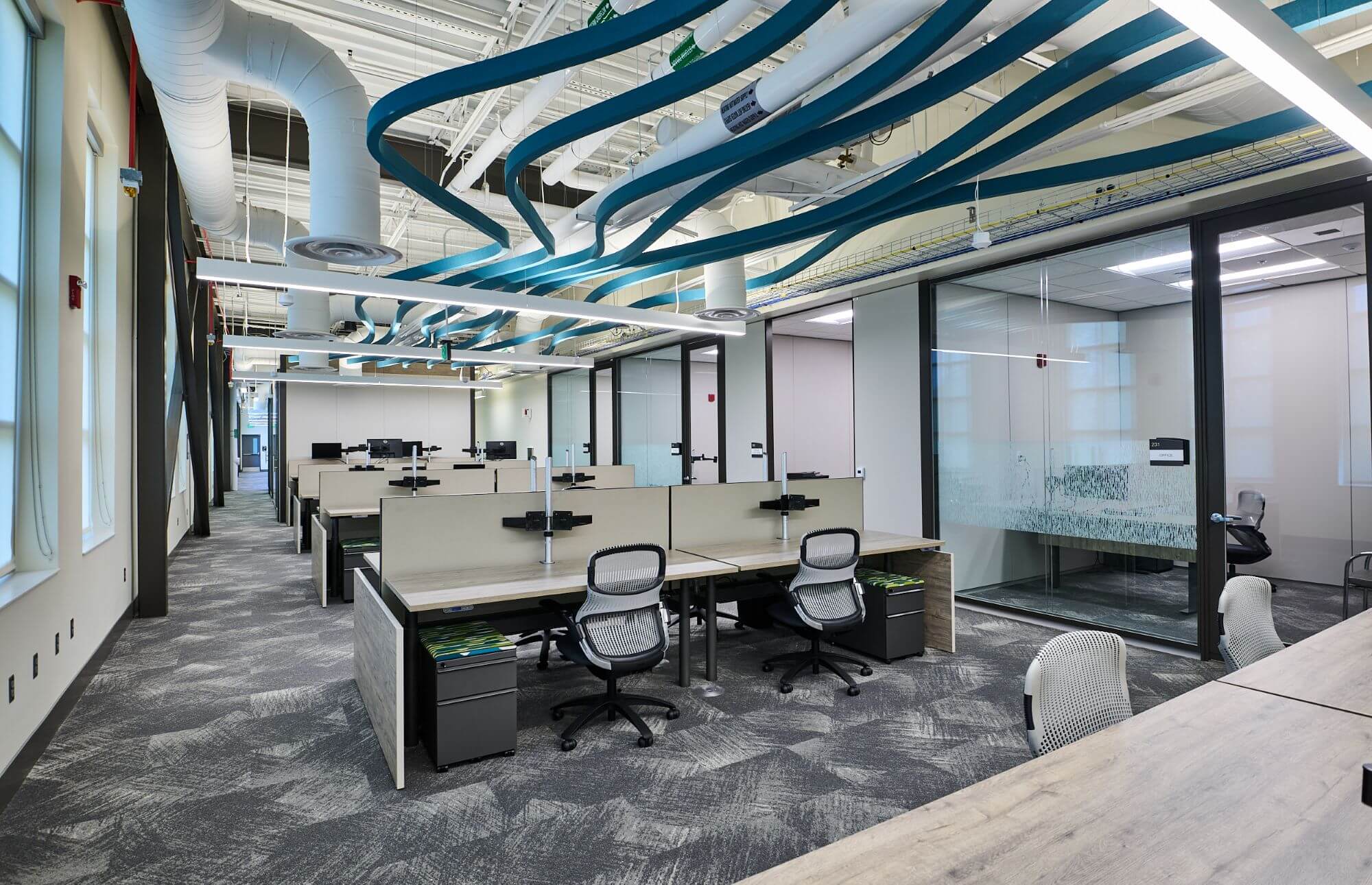
Educational and Collaborative Spaces
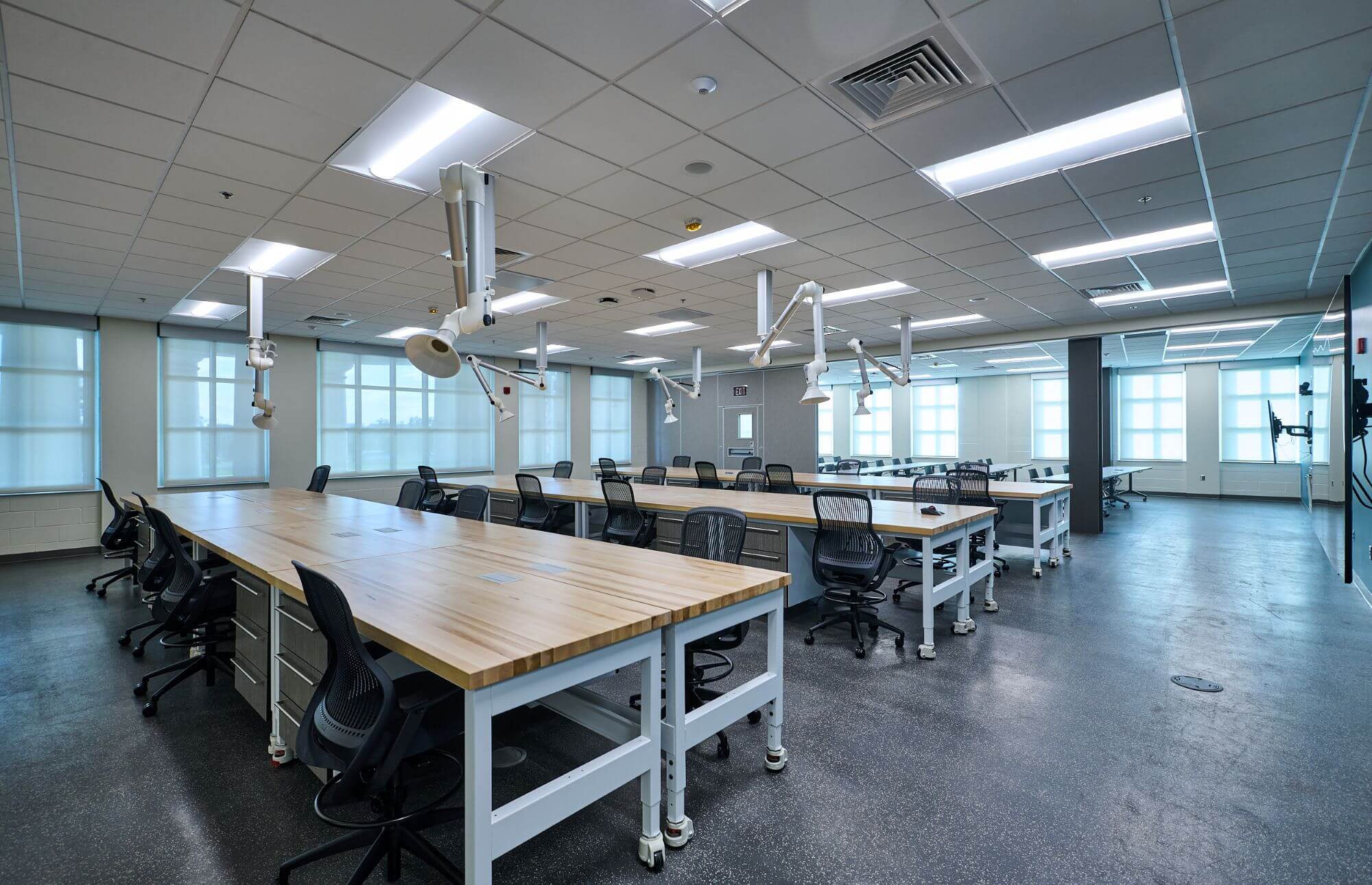
Training rooms are designed for versatility, accommodating wet chemistry and electronics training. A removable partition converts the space between classrooms and labs, allowing dynamic facility use.
The 150-person auditorium features stained wood veneer seating, perforated metal risers, quartz stair treads and decorative wood substrates. Exposed ceilings, with a perforated metal acoustical cloud over the stair seating and presentation area, further enhance the acoustics. The presentation area boasts a decorative wave-textured wall to complement the large auditorium monitor, with carpet tiles used on the floor for better acoustics.
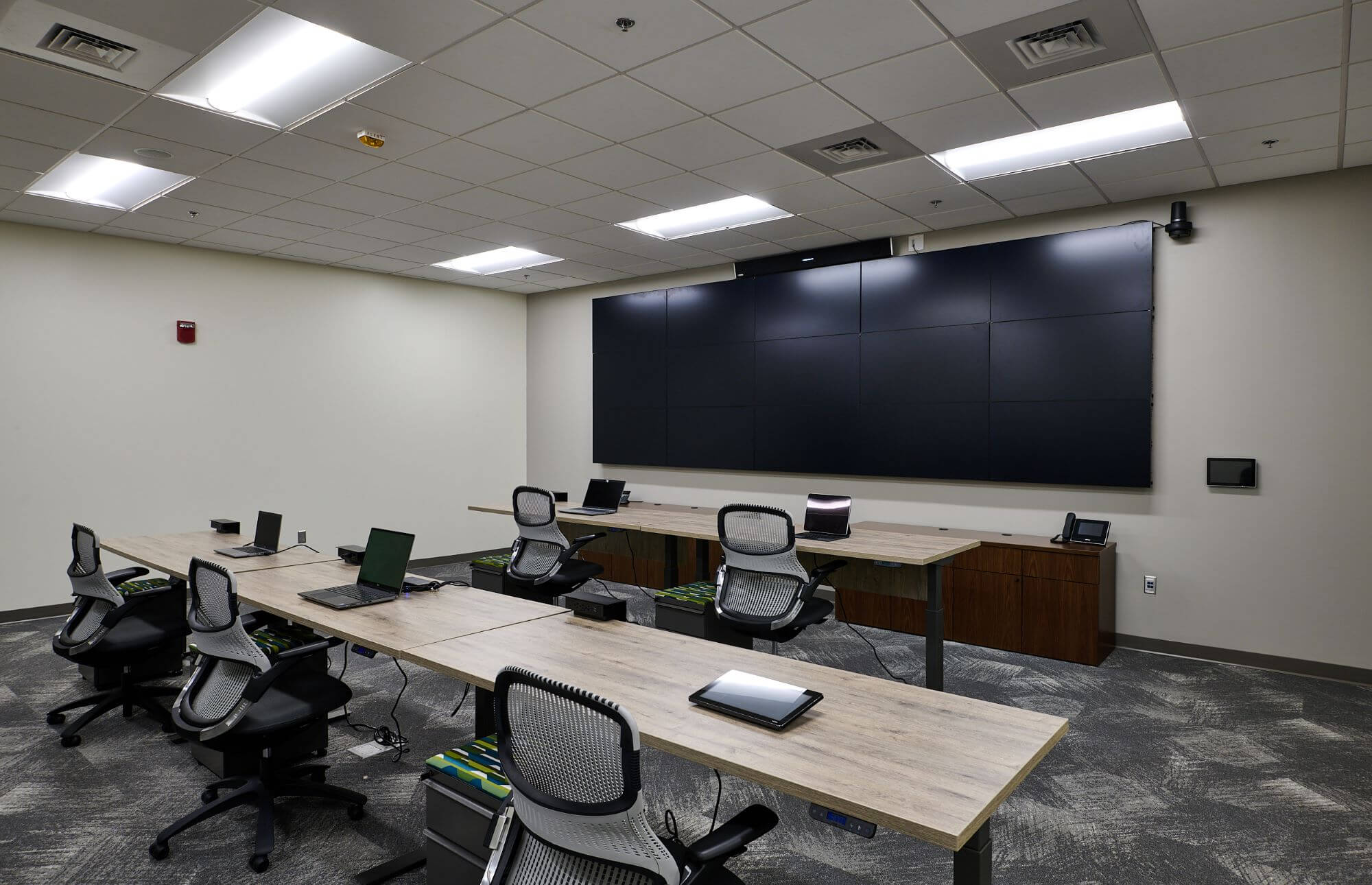
Sustainability and Environmental Control
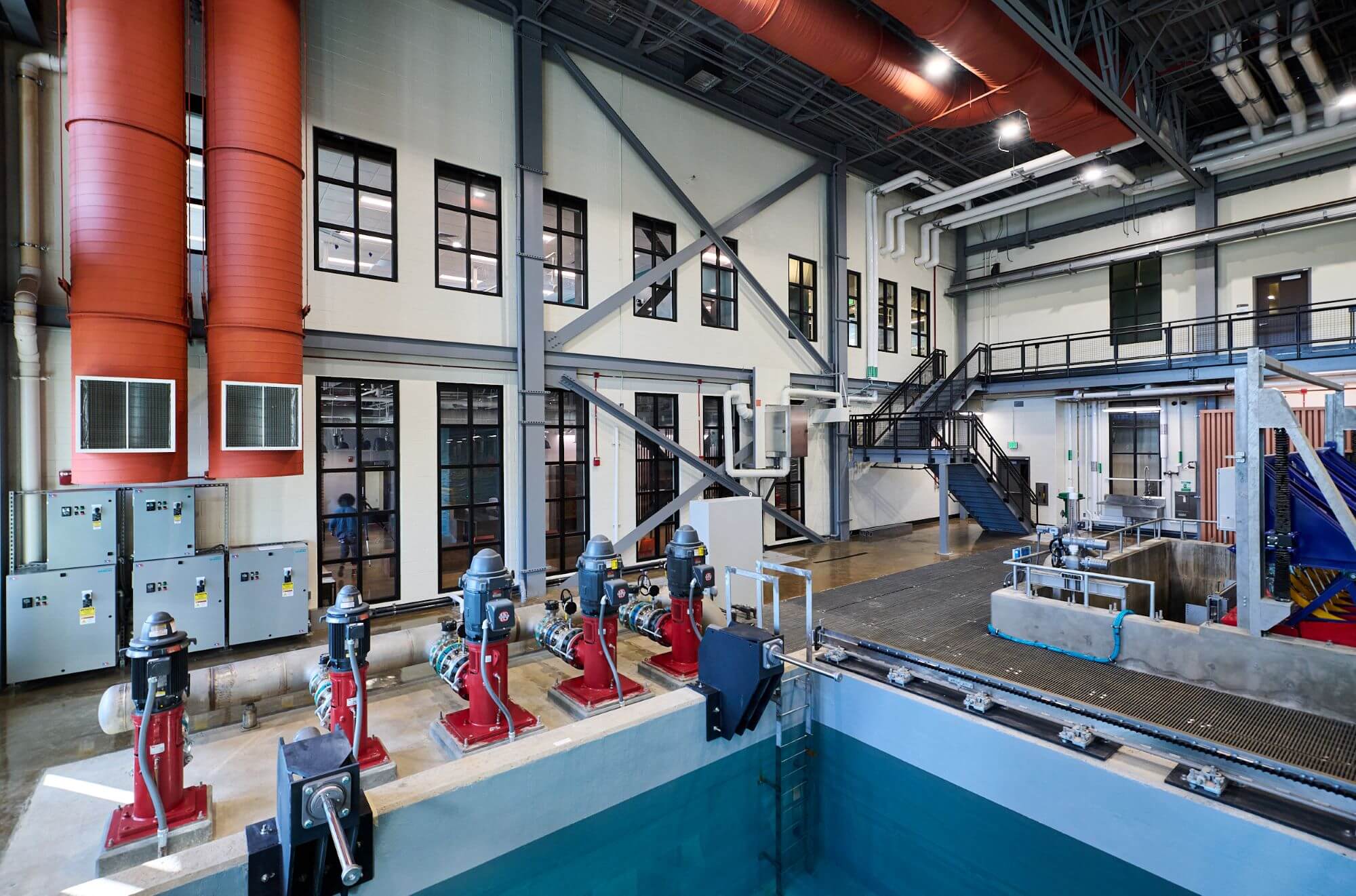
Stormwater and Energy Management
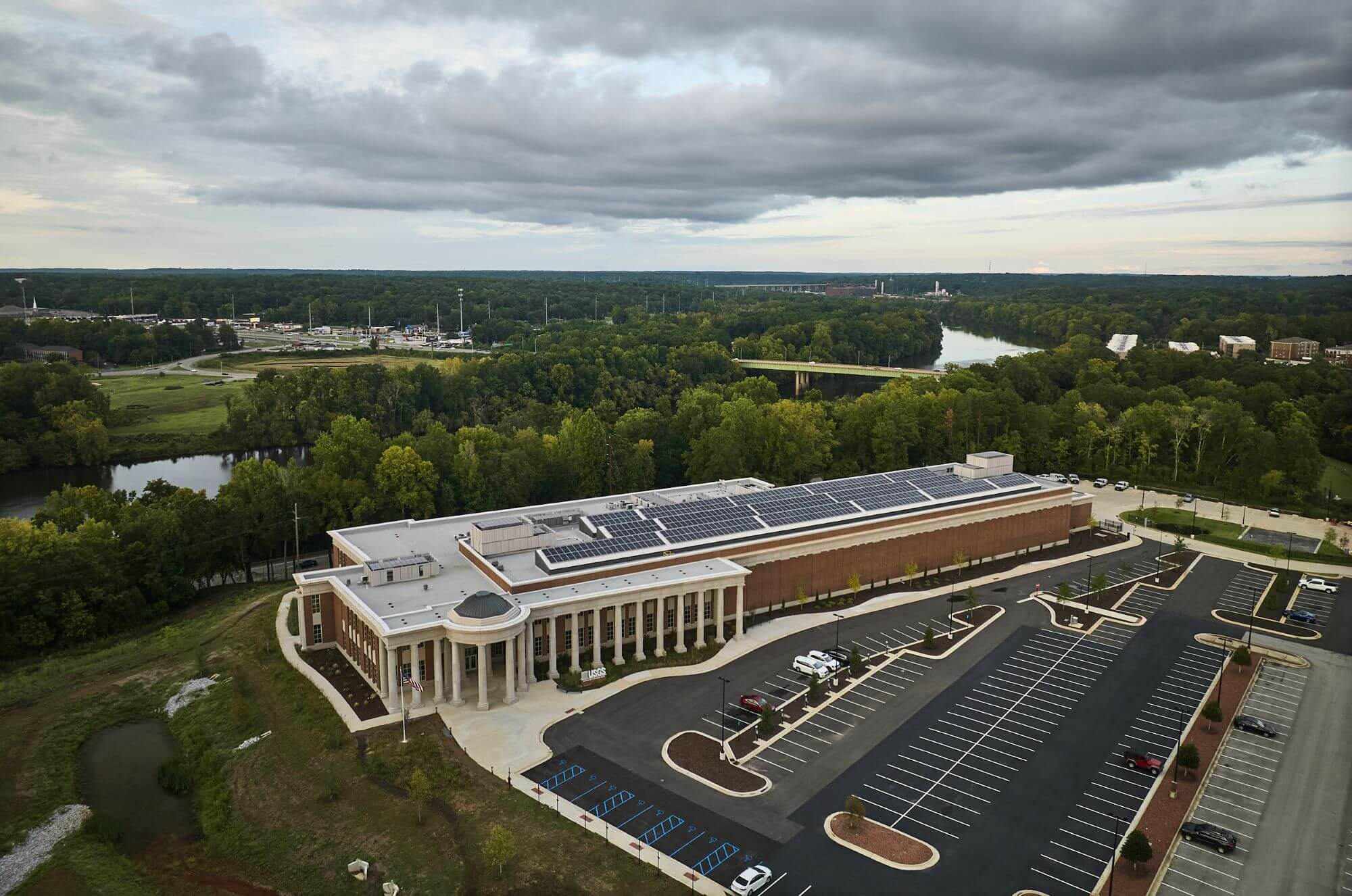
The HIF incorporates stormwater management strategies and other features that contribute to its overall sustainability. An on-site stormwater detention system collects site and roof drainage to be stored in underground basins. The roof houses a photovoltaic array of over 500 solar panels. Daylighting strategies reduce energy use while maintaining comfort, and light shelves protect spaces from solar gain, creating an energy-efficient environment.
Excellence in Architecture
